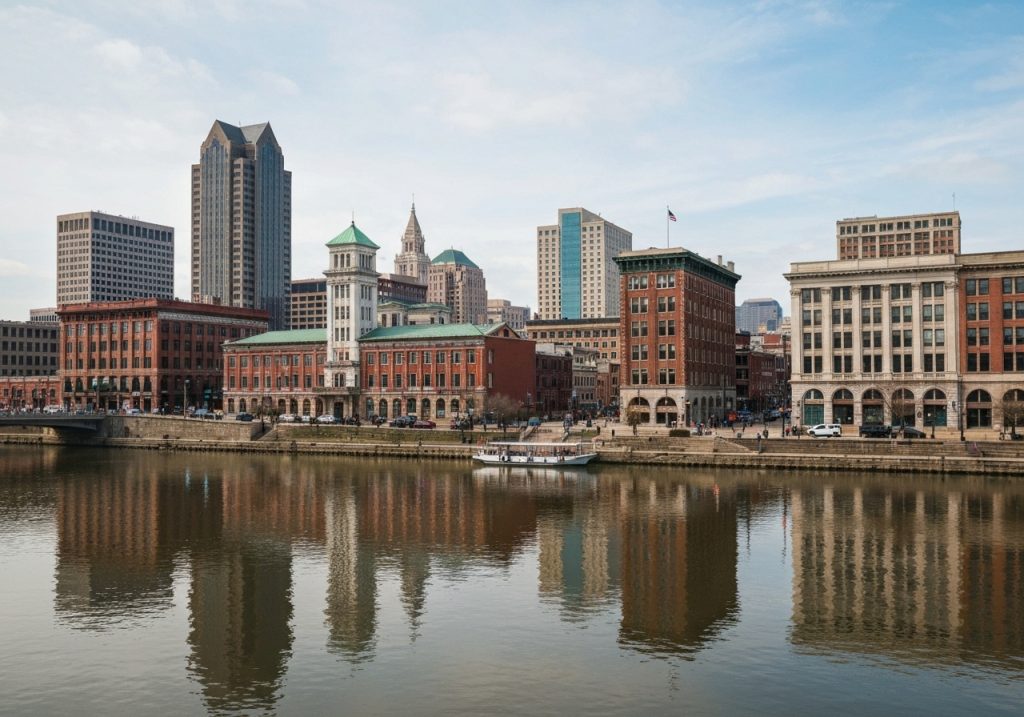
The opening of the Louisville & Portland Canal in 1830, bypassing the Falls of the Ohio, catapulted Louisville into a new era of growth. Steamboats, with their greater speed and capacity compared to flatboats, began streaming into Louisville year-round. The city’s merchant class flourished, financing railroads that connected Louisville to Lexington, Cincinnati, and beyond, knitting the city into a burgeoning national market system.
Louisville’s population swelled, bringing artisans, merchants, and families from across the young nation. Churches, libraries, and newspapers appeared, and in 1837 the city established its first public school system. In 1830, Transylvania University opened its Louisville branch, eventually evolving into the University of Louisville, which would become a center of medical research and higher learning.
Although Kentucky declared neutrality at the outbreak of the American Civil War, Louisville’s pro-Union sentiment, fueled by its economic ties to northern markets and a sizeable abolitionist community, made it a critical military and logistical hub. Union troops occupied the city in 1861, and Louisville served as a supply depot and hospital center for the western theater. After the war, freedmen settled in communities like Jackson Ward, establishing churches, schools, and businesses that infused new cultural life into the city during Reconstruction.
The late 19th and early 20th centuries saw Louisville become a powerhouse of manufacturing. Tobacco processing firms like Brown & Williamson, bourbon distilleries—most famously the Brown-Forman and Heaven Hill companies—and meatpacking plants along the riverfront employed thousands. Horse racing, long popular at the Louisville Jockey Club’s track, gained international renown with the first Kentucky Derby in 1875, an event that remains the “Most Exciting Two Minutes in Sports.”
Mid-century saw both the challenges and triumphs of the Civil Rights movement. Louisville’s African American neighborhoods, especially the West End and Russell, organized sit-ins and protests to desegregate public facilities. Despite economic disinvestment and highway construction that disrupted once-thriving districts, community leaders strove to preserve cultural landmarks and promote economic development.
Today, Louisville balances its rich heritage with 21st-century innovation. The riverfront has been transformed into scenic parks and a thriving entertainment district. The University of Louisville Medical Center is a beacon for healthcare and research. Annual festivals—from the Kentucky Derby Festival to the St. James Court Art Show—draw millions. Amid rapid growth in craft distilleries, bourbon tourism, and a vibrant culinary scene, Louisville remains true to its roots as a river city built on diversity, resilience, and the promise of new frontiers.
Long before European settlers arrived, the land that would become Louisville was home to Indigenous peoples, notably the Shawnee and Cherokee, who fished along the Ohio River and hunted in its fertile floodplains. In September 1778, during the American Revolutionary War, Virginia militia leader George Rogers Clark established a small fort on what is now the Louisville waterfront, naming it Fort-on-Shore. Almost immediately, the settlement grew as pioneers, attracted by the river’s promise of trade and rich farmland, built cabins and small docks along the riverbank.
In 1779, surveyor-general George Rogers Clark formally platted the town, laying out a grid of streets. He chose to honor his cousin, Colonel William Preston’s friend and Revolutionary War hero, the Marquis de La Fayette; however, local legends suggest that surveyor General George Rogers Clark actually named the settlement “Louisville” after King Louis XVI of France, in gratitude for French support during the Revolution.
By 1780, Louisville had established itself as a key river port. Flatboats bearing tobacco, hemp, and salt pork drifted downriver to New Orleans, and keelboats returned with manufactured goods and tropical products. The town’s strategic location below the Falls of the Ohio—an eight-mile stretch of rapids that impeded navigation—meant that river traffic had to unload, portage goods around the shoals, and reload at Louisville. Entrepreneurs capitalized on this portage trade, building warehouses, mills, and taverns, and laying the foundation for the city’s mercantile prosperity.
[descriptions]